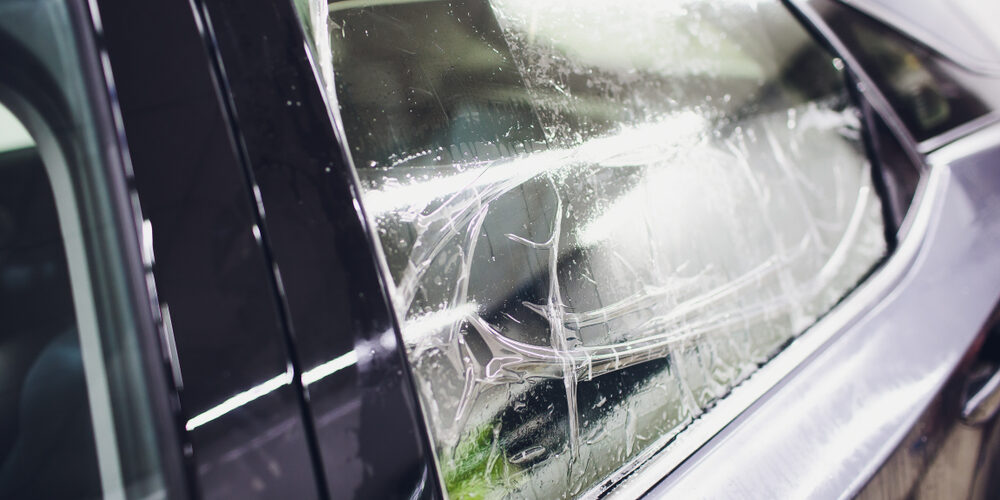Applying window tint on the outside of a window, as opposed to the standard practice of applying it on the inside.
This can lead to several issues and considerations…
1. Exposure to the Elements
- Durability Concerns – Window tint applied to the exterior is directly exposed to weather conditions such as rain, snow, sun, and extreme temperatures. This exposure can accelerate wear and tear, leading to fading, peeling, cracking, or delamination of the film.
- Damage from Cleaning and Maintenance – Exterior-applied films are more susceptible to damage from cleaning processes, debris, and physical contact, which can reduce their lifespan and effectiveness.
2. Reduced Effectiveness
- Efficiency in Heat and UV Rejection – While exterior tints can still block UV rays and reduce some heat, their effectiveness may be compromised over time due to the aforementioned weathering and damage. The protective features may degrade faster than if the film were applied inside.
3. Installation Challenges
- Adhesion Issues – The outdoor surface of a window can introduce additional challenges for film adhesion, especially if the surface is not perfectly clean or if environmental conditions (like wind or moisture) affect the application process.
4. Maintenance and Replacement
- Increased Maintenance – Exterior tints may require more frequent maintenance checks to ensure they remain effective and visually appealing.
- Easier Replacement – On a positive note, should the film need to be replaced due to damage or wear, exterior films can sometimes be easier to remove and replace than interior films, especially in buildings where interior access to windows is difficult.
5. Specialized Exterior Films
- Existence of Exterior-Grade Films – It’s worth noting that there are window films specifically designed for exterior application. These films are engineered to withstand environmental conditions better than standard films. If exterior application is necessary, choosing these specialized products is crucial for durability and performance.
Conclusion
While applying tint on the outside of windows is not the standard practice due to the potential for quicker degradation and reduced effectiveness, there are situations where it might be considered, such as with hard-to-reach interior windows or when using films specially designed for exterior use. For most applications, interior-applied window tint remains the recommended choice for its longevity, effectiveness, and overall value.






